INTRODUCTION
My thesis project healing city is mainly to improve people’s mental health by improving the urban environment. Because for example many studies have pointed out even by just visual access (viewing natural scenes), green space exposure could reduce stress and restore the ability to pay attention and concentrate.
If I can find out which urban environment features and how these features affect people’s different emotions, I can propose environmental improvement strategies that are beneficial to people’s mental health.
So it’s very import to study the urban environment from a human perspective.

DATASET
STREET VIEW IMAGES
So I decided to use street view images to study urban environment. Because it’s not like studying urban environment through satellite images or bird’s-eye views. It can really reflect the urban scene that people see.
AI-DRIVEN TECHNOLOGY
I have used AI technology from data generation to data analysis.

STREET VIEW IMAGE PANORAMIC SEGMENTATION
Using panoramic segmentation to analyze street view images. Panoramic segmentation includes two aspects, one is instance segmentationP and the other is semantic segmentation. Instance segmentation can analyze the number of different types of objects in each street view image, such as person amount and vehicle amount. Semantic segmentation can analyze the area ratio of different things, such as the proportion of the sky in the entire image.
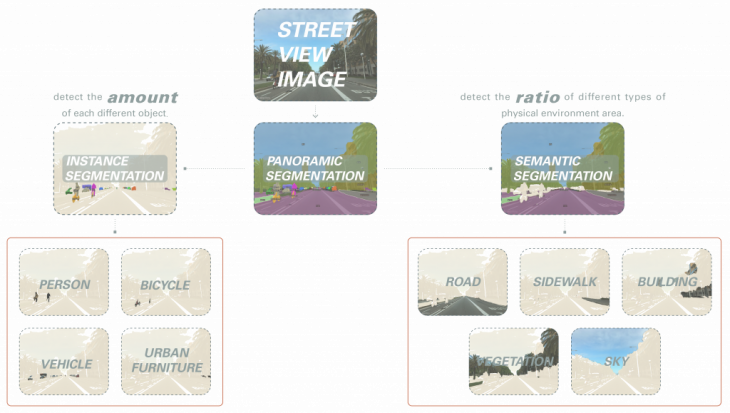
URBAN FEATURES
I analyzed 98,673 images of Barcelona’s street view, and each image analyzed the number or proportion of 14 features. Because some can’t reflect the scene of the city well. So I chose nine features (including four quantitative features and five proportional features).

SPATIAL DISTRIBUTION OF URBAN FEATURES

URBAN SCENE TYPOLOGY ANALYSIS
Using these nine features for cluster analysis to get the urban scene typology.
I chose two clustering methods, one is k-means and the other is hierarchical clustering. k-means can handle a large amount of data well, and hierarchical clustering can well show the hierarchical relationship between various categories.

URBAN SCENE TYPOLOGY
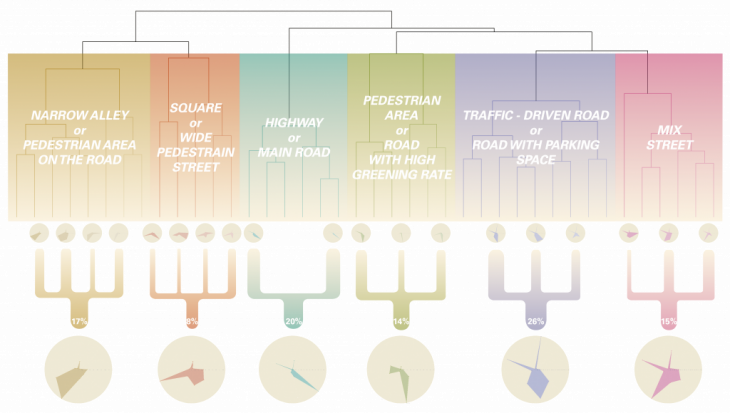
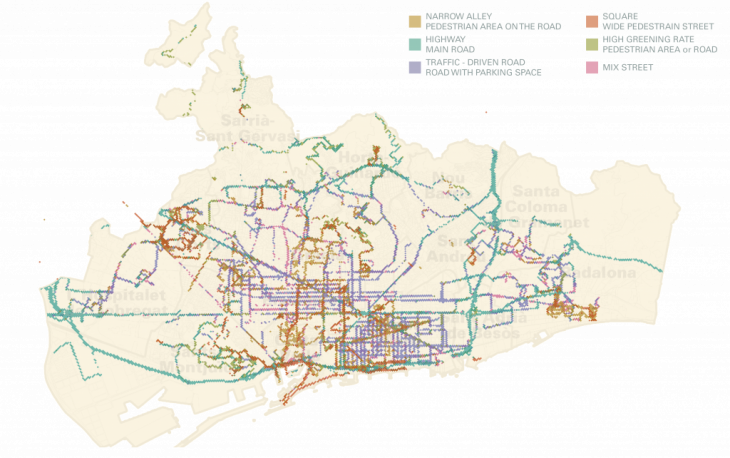
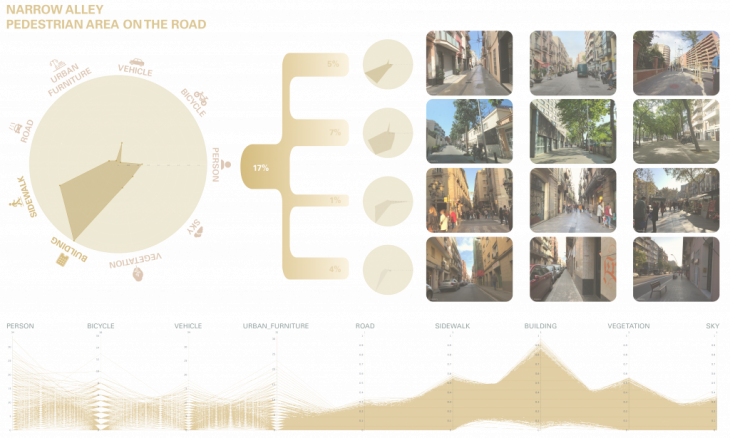
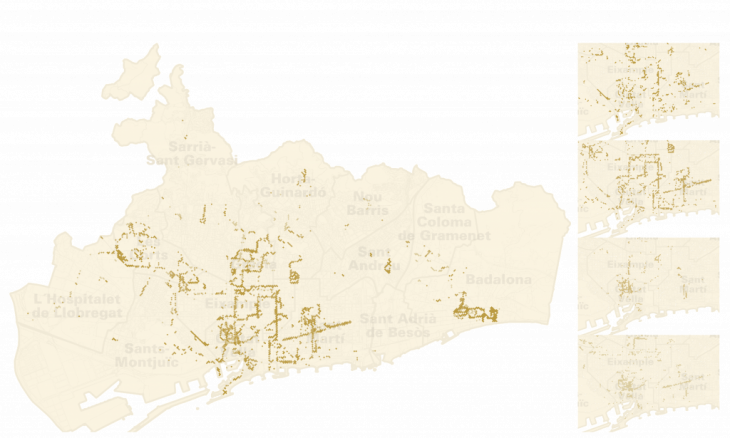
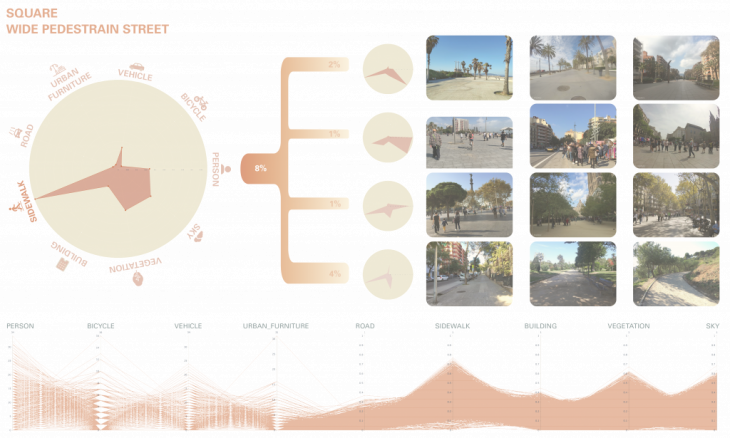
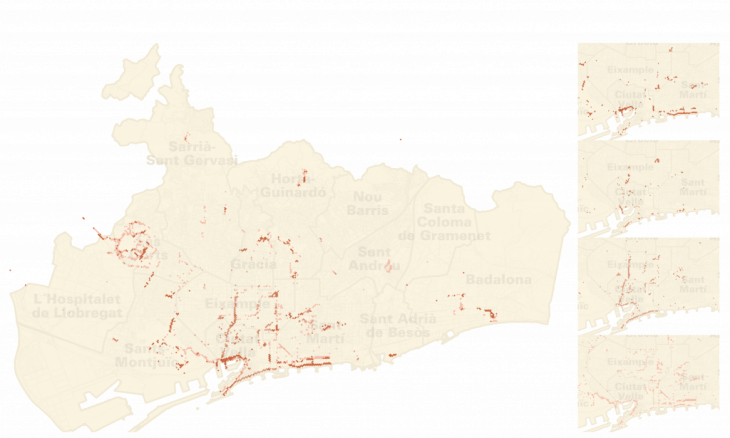

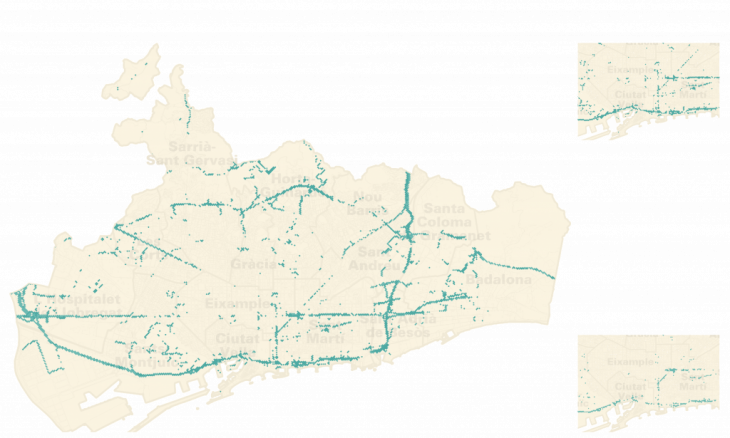

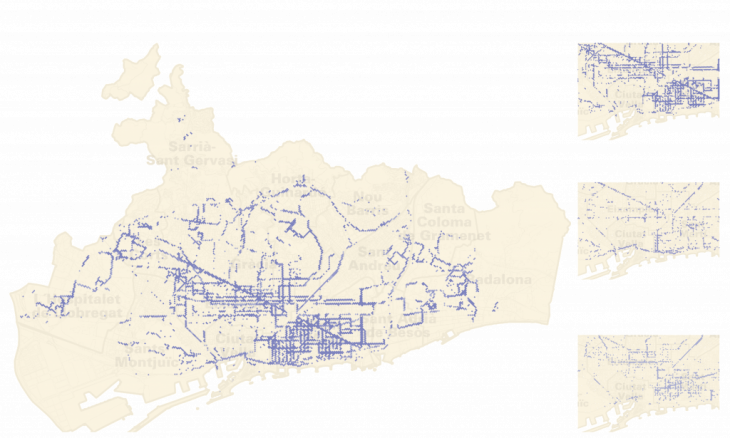
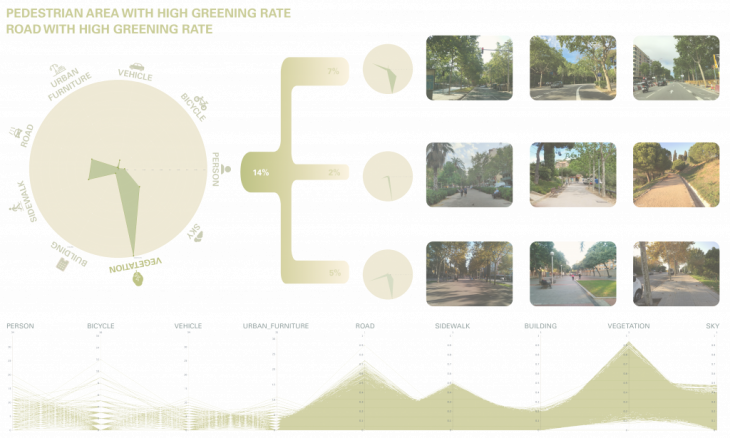
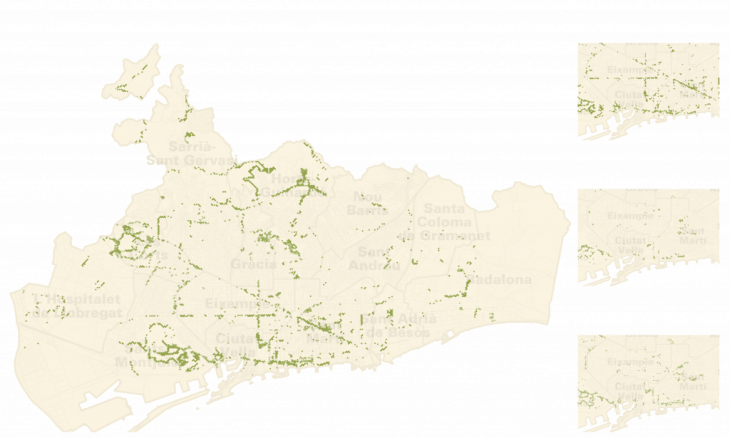

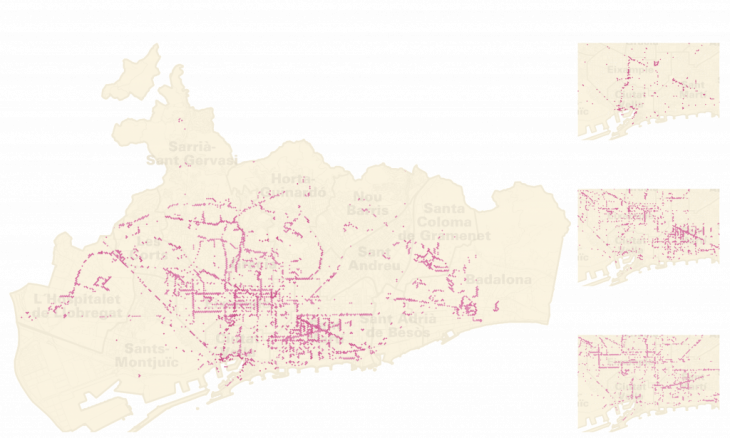
URBAN SCENE TYPOLOGY – ZOOM
Because I study street view images, I can do more detailed research. For example, when I zoom into a certain area, I can use a smaller grid for research and obtain more detailed results, which can be used as a basis for urban environment improvement.
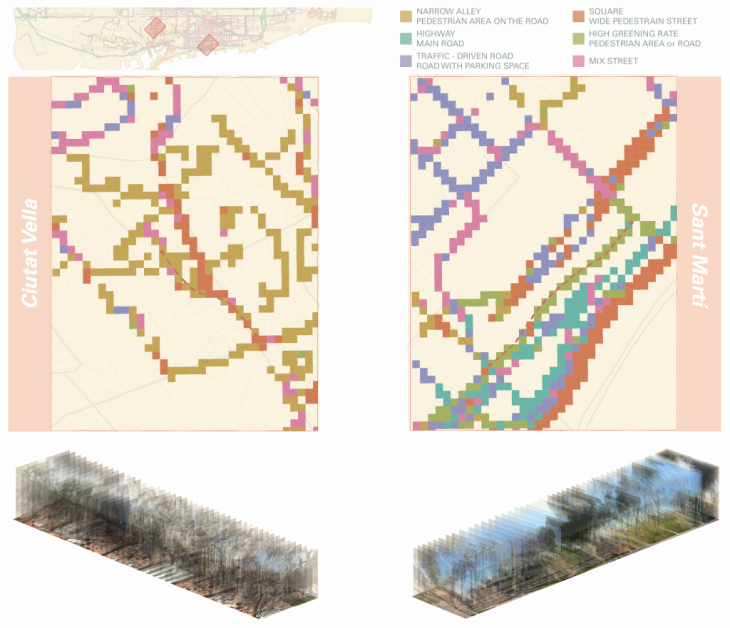
CONCLUSION
HUMAN PERSPECTIVE URBAN SCENE TYPOLOGY
HEALING CITY – URBAN SCENE TYPOLOGY is a project of IaaC, Institute for Advanced Architecture of Catalonia
developed at Master in City & Technology 02 in (2019/2020) by:
Students: Luyang Zhang
Faculties:Angelos Chronis, Nariddh Khean, Serjoscha Duering